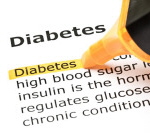
 Doing aerobic exercise for 30 minutes a day, most days of the week, provides many benefits. You can even split up those 30 minutes into several parts. For example, you can take three brisk 10-minute walks, one after each meal.
Doing aerobic exercise for 30 minutes a day, most days of the week, provides many benefits. You can even split up those 30 minutes into several parts. For example, you can take three brisk 10-minute walks, one after each meal.
If you haven’t exercised lately, see your doctor first to make sure it’s alright for you to increase your level of physical activity. Talk with your doctor about how to warm up and stretch before exercise and how to cool down after exercise. Then start slowly with 5 to 10 minutes a day. Add a little more time each week, aiming for 150 to 200 minutes per week.
Aerobic activity means “involving oxygen consumption by the body.” Aerobic exercise requires the use of large muscles and makes your heart beat faster. Aerobic activities like walking, jogging, swimming, and cycling require a great deal of oxygen to make the energy needed for prolonged exercise.
Benefits of Regular Aerobic Exercise
- Increase in maximal oxygen consumption
- Overall improvement in cardiovascular/cardiorespiratory function (heart and lungs)
- Increased maximal cardiac output (amount of blood pumped every minute)
- Increased maximal stroke volume (amount of blood pumped with each beat)
- Increased blood volume and ability to carry oxygen
- Reduced workload on the heart (myocardial oxygen consumption) for any given submaximal exercise intensity
- Increase in blood supply to muscles and ability to use oxygen
- Lower resting heart rate, and heart and blood pressure during and post exercise
- Increased threshold for lactic acid accumulation
- Lower resting systolic and diastolic blood pressure in people with high blood pressure
- Increased HDL Cholesterol (the good cholesterol)
- Decreased blood triglycerides
- Reduced body fat and improved weight control
- Improved glucose tolerance and reduced insulin resistance


